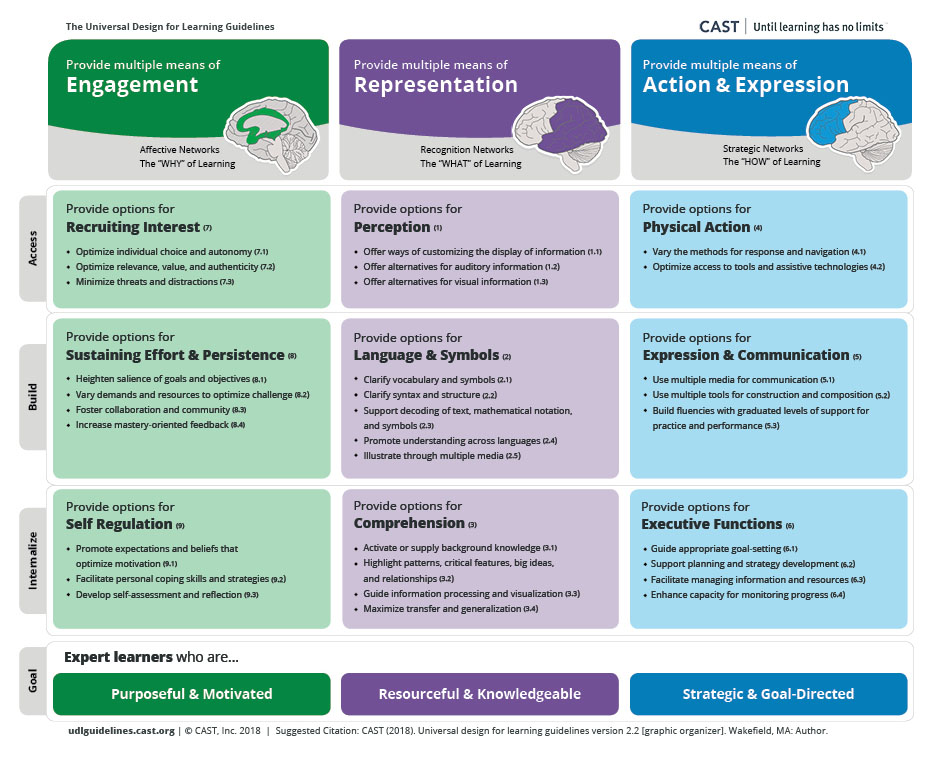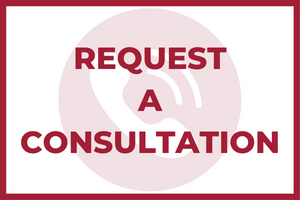What is Universal Design for Learning?
Universal Design for Learning (UDL) is a framework for designing educational environments that are accessible and effective for all learners, regardless of their individual abilities, backgrounds, or learning styles. UDL involves creating flexible learning experiences and providing multiple means of engagement, representation, and expression. By incorporating UDL principles, courses can better accommodate a wide range of learners and support their academic success.
Why use UDL?
-
Increased Accessibility: UDL emphasizes providing multiple means of representation, engagement, and expression to support various learning styles, abilities, and preferences. By implementing UDL principles, course materials and assessment opportunities become more accessible to a broader range of learners, including those with disabilities, different cultural backgrounds, and varying levels of prior knowledge. This increased accessibility helps ensure that all learners have fair opportunities to access and engage with course content.
-
Enhanced Engagement and Motivation: UDL encourages instructors to incorporate various instructional strategies and technologies that cater to learners' interests, preferences, and abilities. By offering multiple pathways for learning and opportunities for active participation, UDL promotes student engagement and motivation. Learners are more likely to remain interested and invested in the course when they can choose activities that align with their strengths and interests, leading to improved learning outcomes and retention.
-
Improved Learning Outcomes: By designing courses based on UDL principles, instructors can create environments that support personalized learning experiences for all students. Providing options for how information is presented, how learners can engage with the material, and how they can demonstrate their understanding allows students to optimize their learning processes according to their individual needs and preferences. As a result, learners are better equipped to overcome learning barriers, develop critical thinking skills, and achieve academic success. Overall, UDL contributes to improved learning outcomes by supporting a learner-centered approach to course design and instruction.
UDL Guidelines
Getting Started with UDL
- Familiarize Yourself with UDL Principles: Learn about the three main principles of UDL: providing multiple means of representation, multiple means of engagement, and multiple means of expression. Understand how these principles can be applied to course design to support a wide range of learners, including the various checkpoints within each principle that outline detailed guidelines to consider.
- Assess Your Course Materials and Activities: Evaluate your current course materials, activities, and assessments to identify potential barriers to learning. Consider how you can provide multiple means of accessing and interacting with course content to address learner needs.
- Start Small and Set Clear Goals: Begin by integrating one or two UDL strategies into your teaching practice. Set specific goals for how you will incorporate these strategies into your course design and instruction. Focus on areas where you see opportunities to enhance accessibility, engagement, and learning outcomes.
- Provide Flexibility and Choice: Offer learners options for how they can engage with course materials, demonstrate their understanding, and participate in learning activities. Allow students to choose from a variety of formats, tools, and resources that align with their preferences, interests, and strengths.
- Seek Support and Collaboration: Connect with colleagues, CETL, and other accessibility specialists who have experience with UDL. Collaborate with others to share ideas, resources, and best practices for implementing UDL in your teaching. Take advantage of professional development opportunities and online communities dedicated to UDL to continue learning and refining your approach.
See more on UDL principles and how they can be applied , or use a course accessibility checklist to check how accessible your course is.
UDL Free Learning Tools
CAST offers a number of robust (and often free) learning tools. These tools—many designed and tested as part of CAST’s research projects—help educators, developers, families, and other individuals experience the power of flexible learning environments.UDL Best Practices



